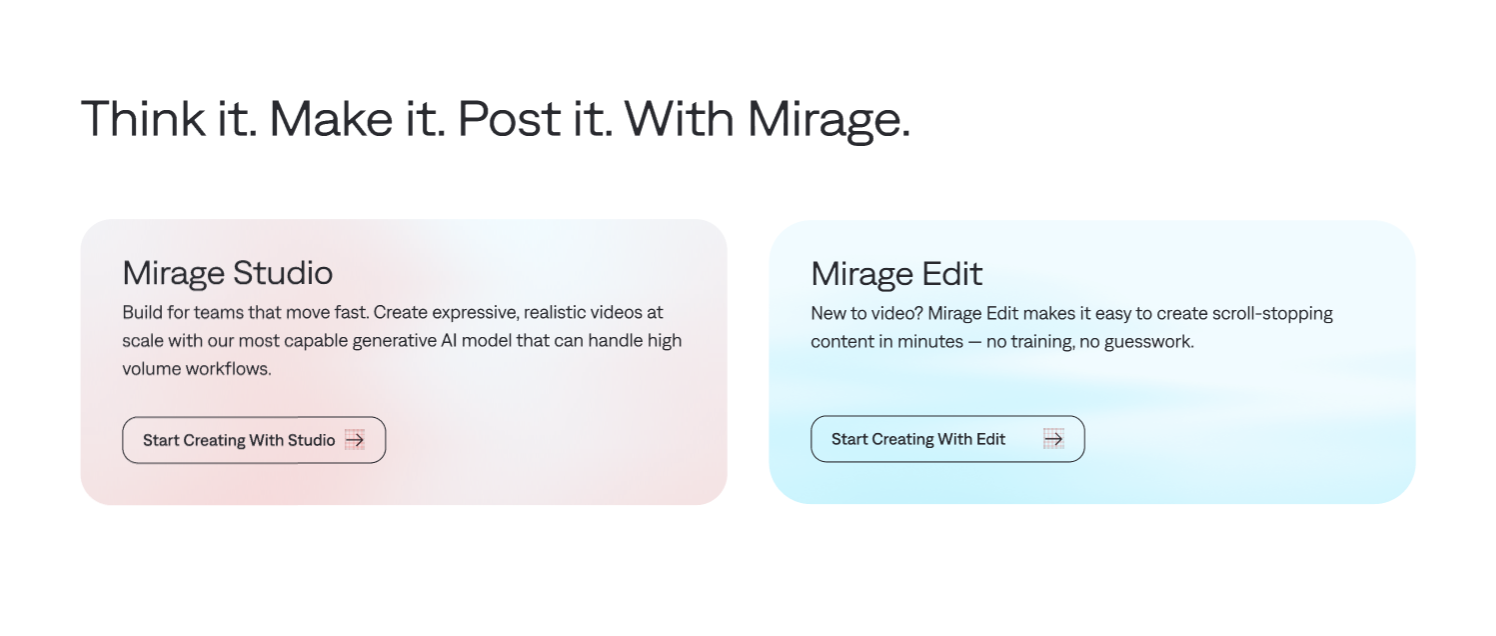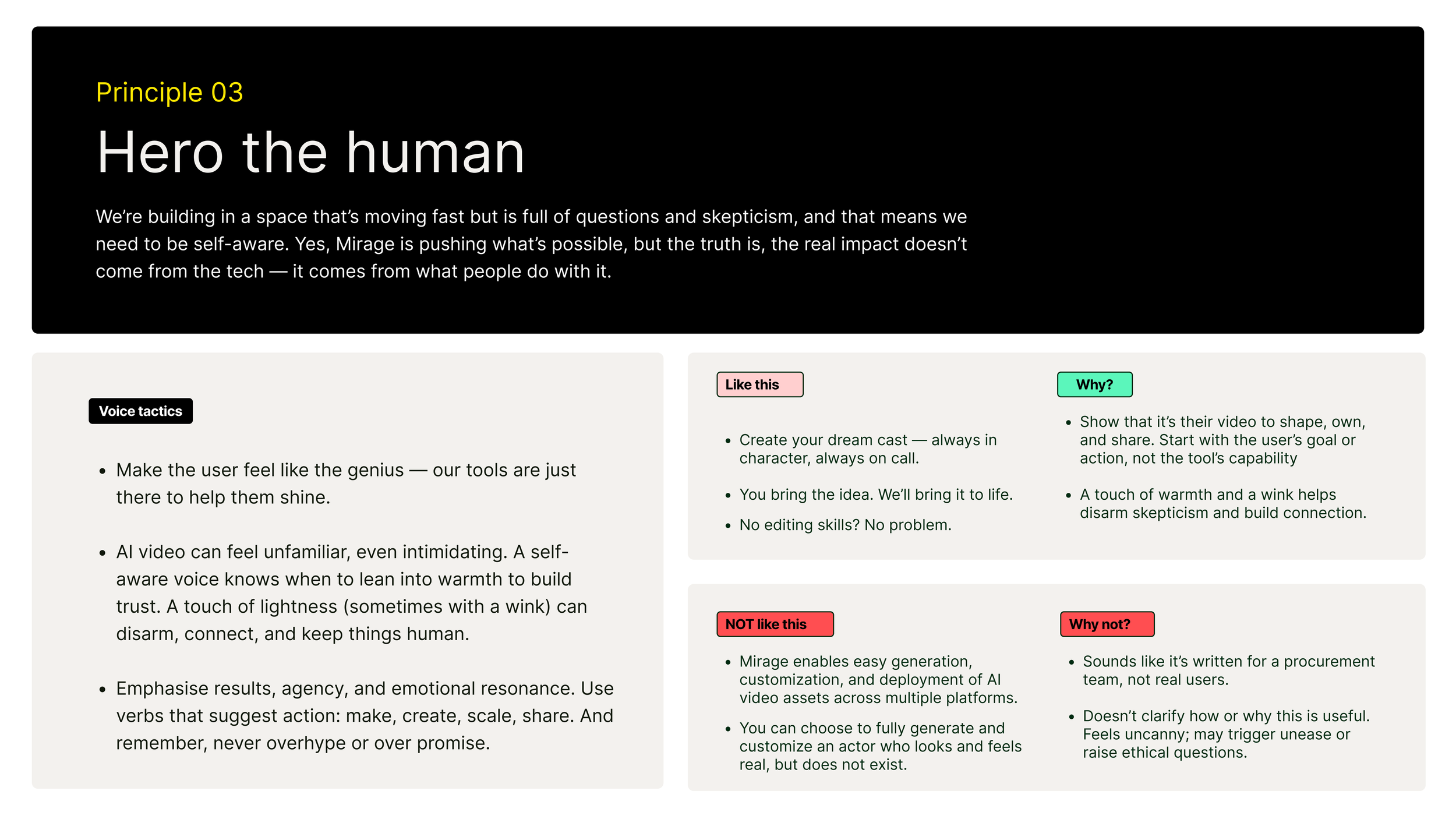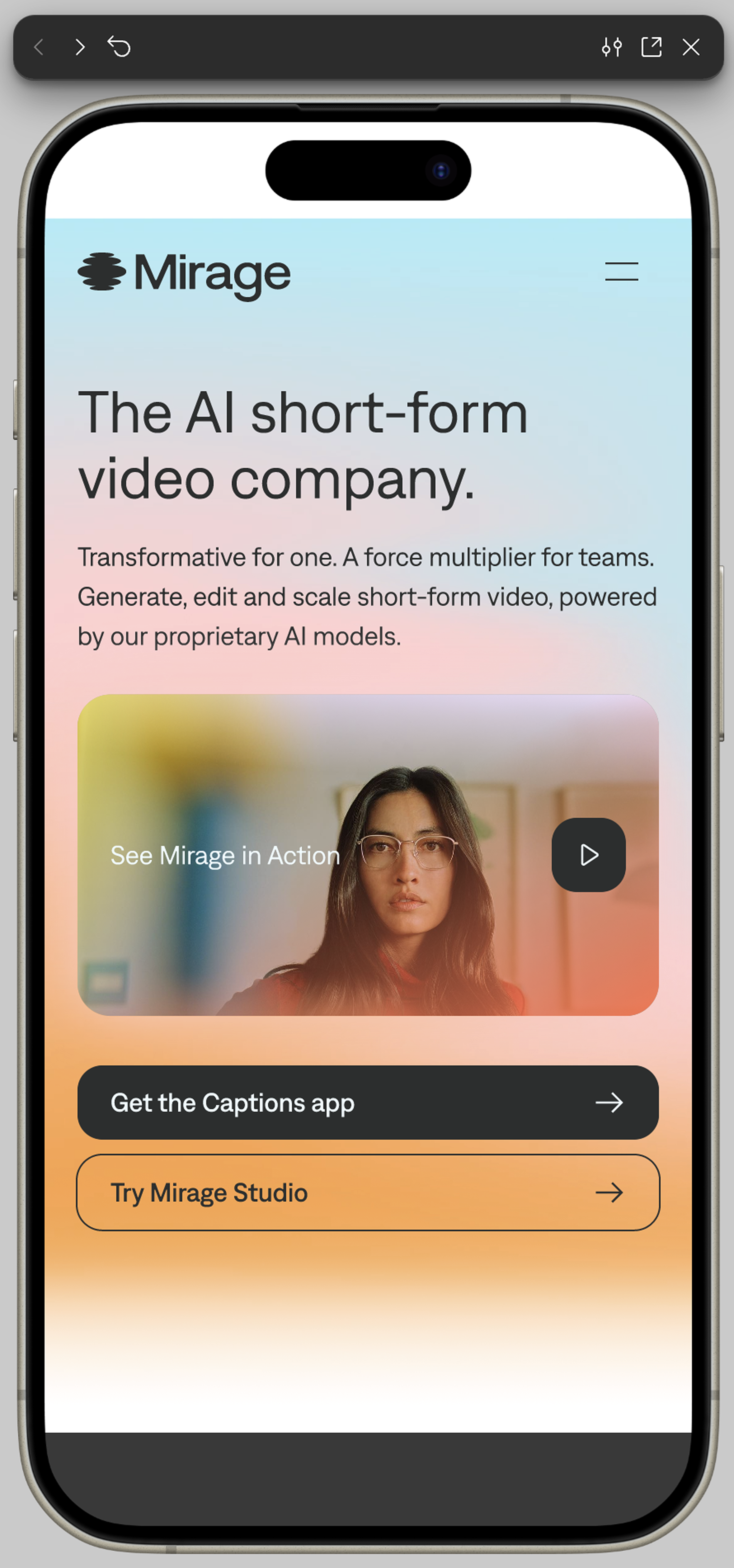
The new face of AI video
Industry
AI
What I did
Verbal Identity, Content Design, Information Architecture
01 - THE CHALLENGE
Captions had built powerful AI video creation capabilities inside its platform, but the potential of their flagship technology — Mirage — needed its own spotlight. Mirage is a groundbreaking AI system that generates energetic, high-converting ad content with spokespeople who don’t exist, complete with micro-expressions, body language, and brand-specific visuals.
02 - THE OPPORTUNITY
Mirage’s biggest selling point wasn’t just the technology — it was what it replaced:
No more weeks of sourcing talent, negotiating, and multiple revisions.
No more creative fatigue from overusing the same ads.
No more cost barriers for small businesses to produce high-quality video content.
The company wanted a landing page that clearly explained their two different Mirage products without confusing the audience, whilst communicating the speed, scale, and creative freedom Mirage offers. The page also needed to speak to two distinct audiences — marketers at businesses and independent creators, and differentiate Mirage from traditional (expensive and slow) ad production processes.
03 - THE PROCESS
When I first stepped into the Mirage project, its positioning was scattered. The story was split between Captions Desktop and Ad Studio, with no single place to understand why Mirage existed or why it mattered. The desktop experience didn’t have a dedicated landing page, and the language leaned heavily on technical details.
For non-technical users, that meant the product’s true value: how it could save them time, money, and creative energy, was getting lost in translation. The messaging for Mirage Studio and Mirage Edit lived in separate corners, never fully tailored to the audiences who needed each most. And the most powerful part of Mirage’s proposition — its ability to replace weeks of traditional ad production with minutes of AI-generated output — was underplayed.
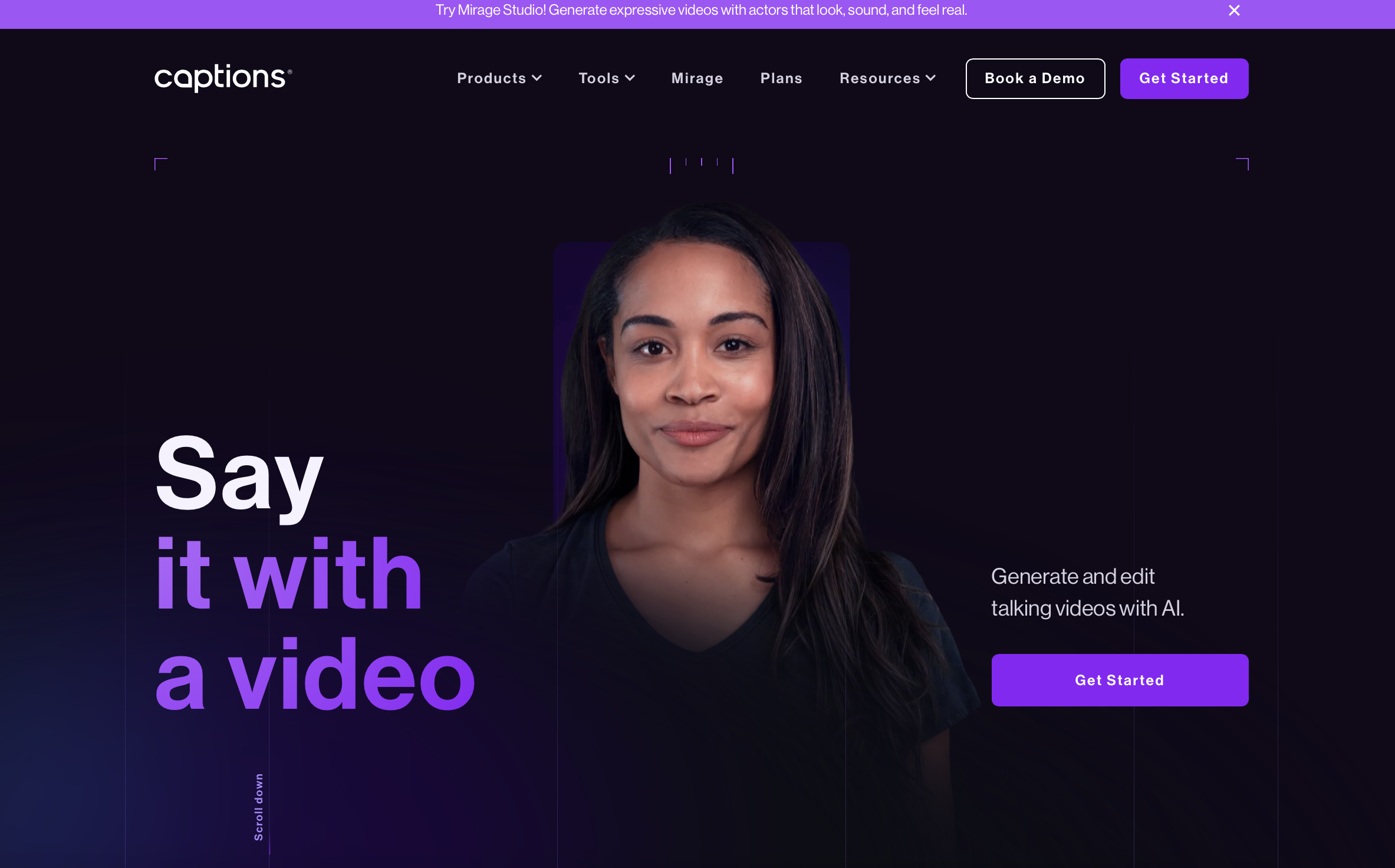
Before

After
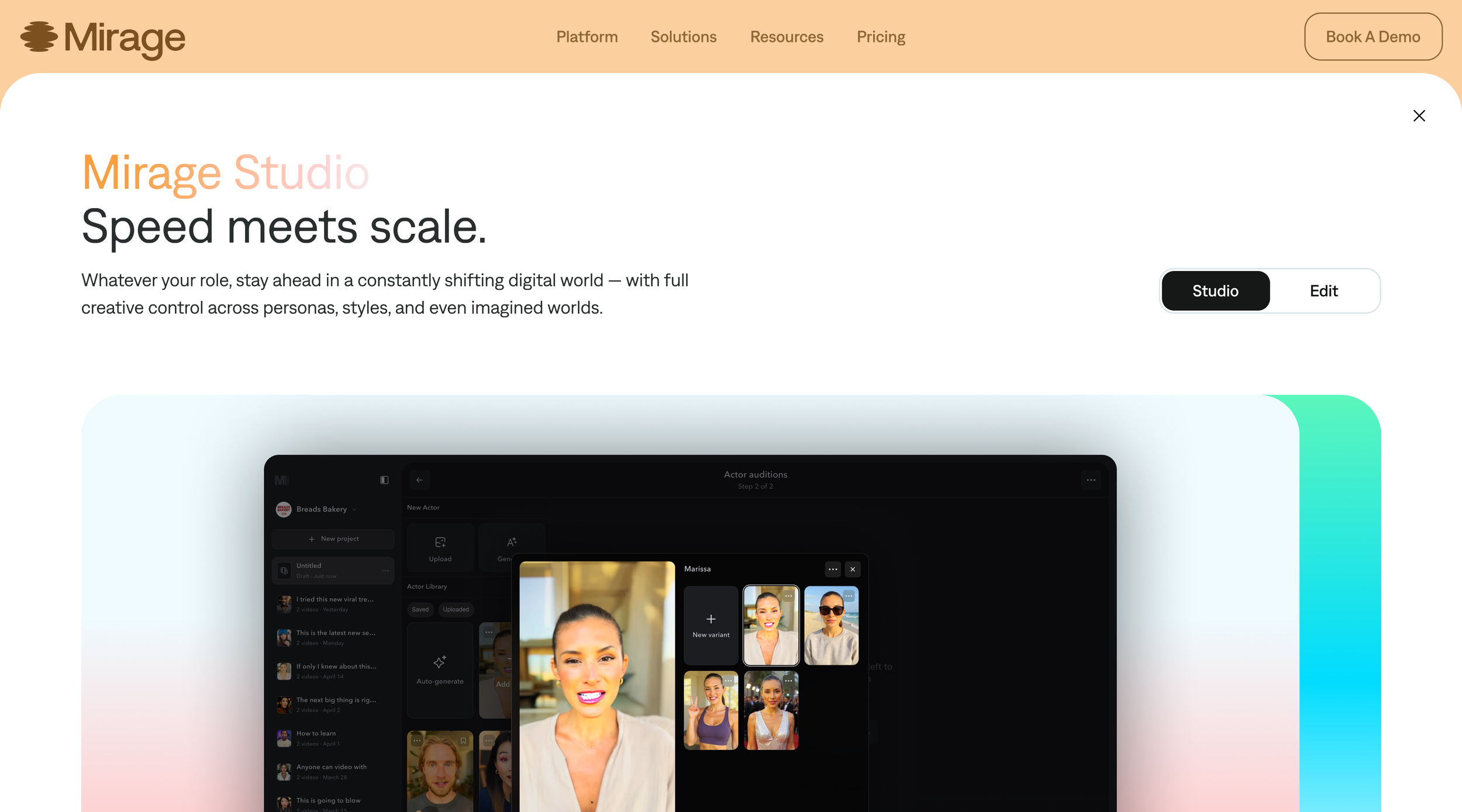
Working alongside design partner Marek Doyle, I set out to change that. We built a cohesive narrative from the ground up, starting with a simple, functional hook. We positioned Mirage Studio and Mirage Edit side by side, giving each its own distinct voice and benefits while keeping them tied together under a single, unified story.
We reframed the traditional pain points — sourcing talent, shooting footage, endless revisions — and contrasted them with Mirage’s speed, scalability, and cost efficiency. Instead of leaning on technical jargon, we built a visual journey that showed the magic in plain sight: from a prompt or audio file, to a generated spokesperson, to a polished ad ready to run.
We brought proof to the table through metrics and real-world scenarios, like taking your best-performing scripts and instantly giving them fresh life with new faces to test different hooks.
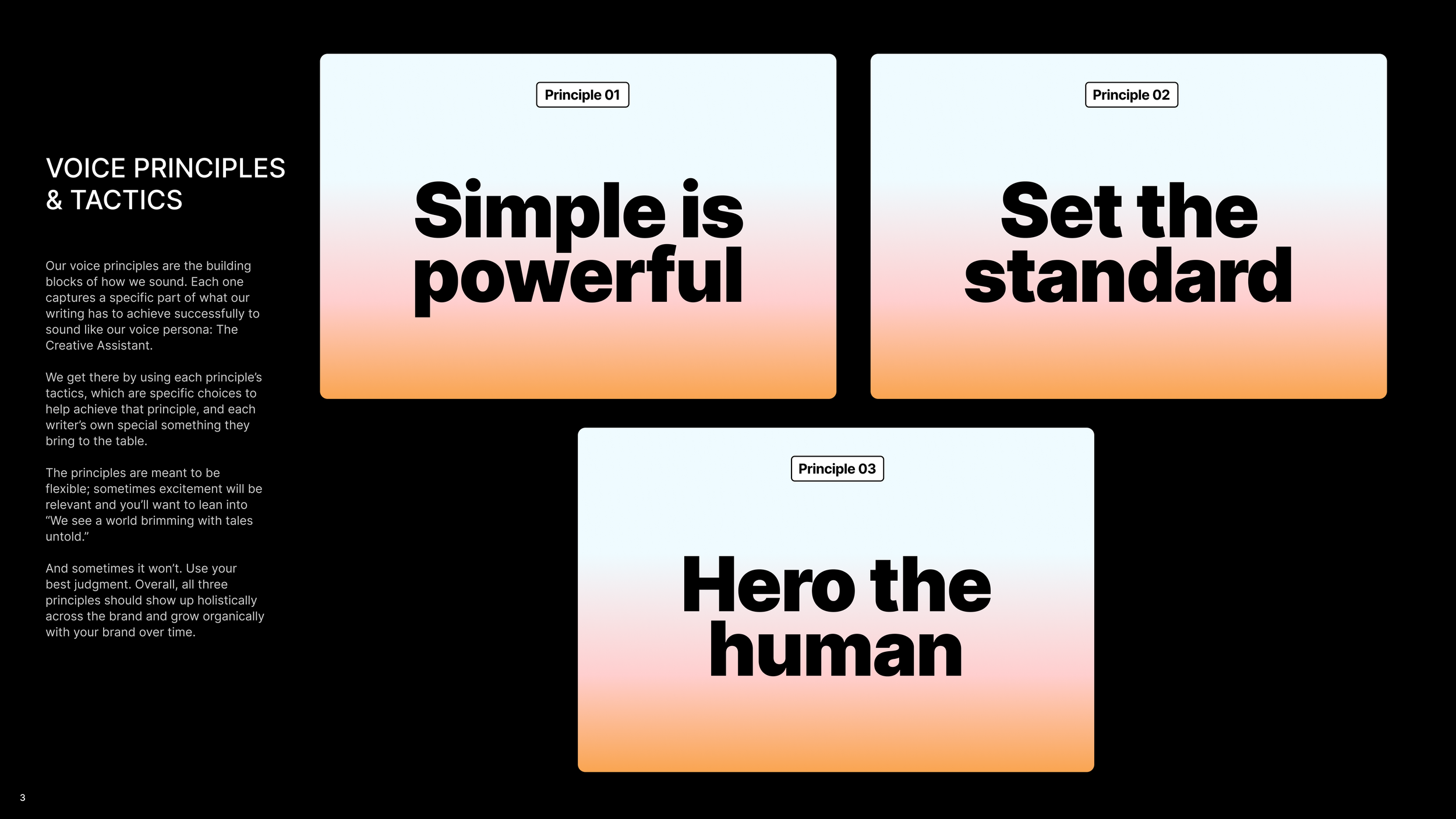
04 - THE solution
The result was a landing page that demystified AI video generation without losing its wow-factor. It spoke to two distinct audiences with clarity and conviction, positioning Mirage as a must-have tool for businesses that live and breathe advertising. It flowed deliberately from curiosity to belief to action — and it worked. The page drove an increase in product signups from ad-focused businesses, built early demand for Mirage Edit ahead of its launch, and cemented Captions’ position as a leader in AI-driven video creation.
